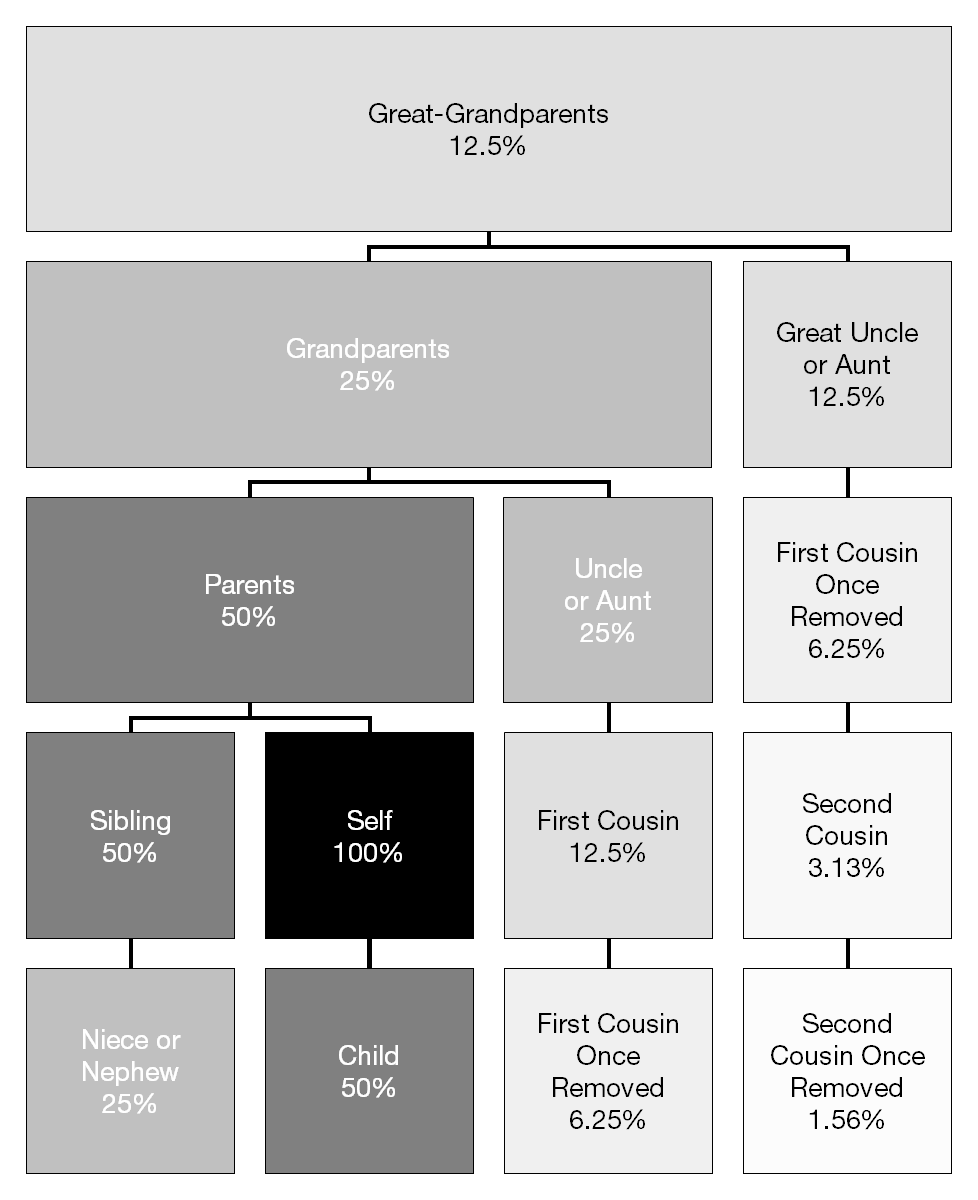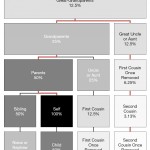Or What percentage of your genetic code do you share with your second cousin?
Two people who share some of their genetic code (their DNA) are said to be consanguineous (“co” meaning shared and “sanguis” being Latin for blood) and the extent to which their DNA overlaps is known as the coefficient of relationship and is measured as a percentage.
Bearing in mind that you get 50% of your genes from each of your parents, it’s relatively easy to calculate the percentage of your DNA that you share with any relative you choose.
 The closer to white a relation is, the lower the amount of DNA shared with that person.
The closer to white a relation is, the lower the amount of DNA shared with that person.
To explain where these figures come from let’s take an example: How much of my DNA do I share with my sister Caroline?
Every one of your genes is split into two parts called alleles; you get one of these two alleles from each of your parents to make up each of your genes. If we take as an example a random gene, OCA2 (a gene that controls for eye colour) it will make it easier to understand the calculation process.
I got half of my OCA2 gene from half of my Dad’s OCA2 gene and the other half of my OCA2 gene from my Mum’s OCA2 gene; the same is true for my sister. I’ll call my Dad’s OCA2 alleles ED1 and ED2 and my Mum’s OCA2 alleles EM1 and EM2. There are therefore four possibilities for my and my sister’s OCA2 genes:
- ED1EM1
- ED1EM2
- ED2EM1
- ED2EM2
With four possible choices for the OCA2 gene there is a 25% chance of us sharing 100% of our DNA, a 50% chance (25%+25%) of sharing 50% of our DNA and a 25% chance of us sharing 0%. If you sum these percentages across all of our genes you get:
(25% × 100%) + (50% × 50%) + (25% × 0%) = 50%.
To quickly calculate the percentage of DNA you share with a relative simply count the number of (vertical) steps you have to take to get to them, and raise one-half to that power. For example, to find the percentage of DNA shared with a second cousin once removed you have to go three steps up and three steps down (the step between grandparents and great-grandparents is not counted twice) giving six steps in total. One half to the power of six is 0.015625 or 1.5625%; this is shown on the diagram below.
All of these calculations assume that none of your distant ancestors interbred with each other: i.e. that you have four unique grandparents, eight unique great-grandparents, sixteen unique great-great-grandparents and so on. Any half-relationships (e.g. half-brother, step-mother) cannot be included and of course I’m ignoring the fact that we are all related if you go back far enough.
